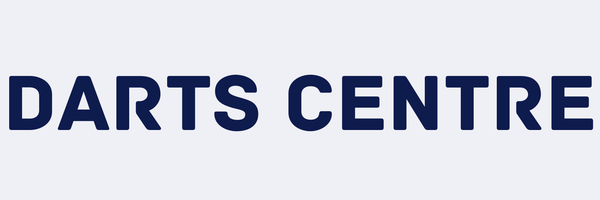
Darts Terminology for beginners
Share
Bullseye - The small red and green circle in the centre of the dartboard. The inner bullseye is worth 50 points, and the outer bullseye is worth 25 points.
Treble - The narrow inner ring of each numbered section. Hitting the treble scores three times the points of that section.
Double - The outer narrow ring of each numbered section. Hitting the double scores two times the points of that section.
Single - The large area between the treble and double rings. Hitting the single scores one point for that section.
Score - The total points a player has accumulated during a round.
Turn - A player's chance to throw three darts at the board.
Checkout - The final throw of a game that will bring the player's score down to exactly zero. The most common checkout is 20-20-Double 20 (T20-T20-D20), which gives a score of 60 points.
Bust - If a player's score goes below zero after throwing, their turn ends with zero points for that round.
Flight - The fins or wings at the back of the dart that stabilize it in the air.
Shaft - The long, thin part of the dart that connects the flight to the barrel.
Barrel - The thickest part of the dart that the player grips while throwing.
Oche - The line that players stand behind while throwing their darts. The standard distance from the oche to the dartboard is 7 feet 9.25 inches.
Bull-up - A coin toss or other method used to determine who throws first in a game.
Scoring Zone - The area of the dartboard where darts can be scored. It includes the treble, double, and single sections.
Leg - A leg is a single game of darts. In a match, players typically play a best-of series of legs.
Set - A set is a group of legs played as part of a larger match. The player who wins the most sets in a match is the overall winner.
Treble - The narrow inner ring of each numbered section. Hitting the treble scores three times the points of that section.
Double - The outer narrow ring of each numbered section. Hitting the double scores two times the points of that section.
Single - The large area between the treble and double rings. Hitting the single scores one point for that section.
Score - The total points a player has accumulated during a round.
Turn - A player's chance to throw three darts at the board.
Checkout - The final throw of a game that will bring the player's score down to exactly zero. The most common checkout is 20-20-Double 20 (T20-T20-D20), which gives a score of 60 points.
Bust - If a player's score goes below zero after throwing, their turn ends with zero points for that round.
Flight - The fins or wings at the back of the dart that stabilize it in the air.
Shaft - The long, thin part of the dart that connects the flight to the barrel.
Barrel - The thickest part of the dart that the player grips while throwing.
Oche - The line that players stand behind while throwing their darts. The standard distance from the oche to the dartboard is 7 feet 9.25 inches.
Bull-up - A coin toss or other method used to determine who throws first in a game.
Scoring Zone - The area of the dartboard where darts can be scored. It includes the treble, double, and single sections.
Leg - A leg is a single game of darts. In a match, players typically play a best-of series of legs.
Set - A set is a group of legs played as part of a larger match. The player who wins the most sets in a match is the overall winner.
